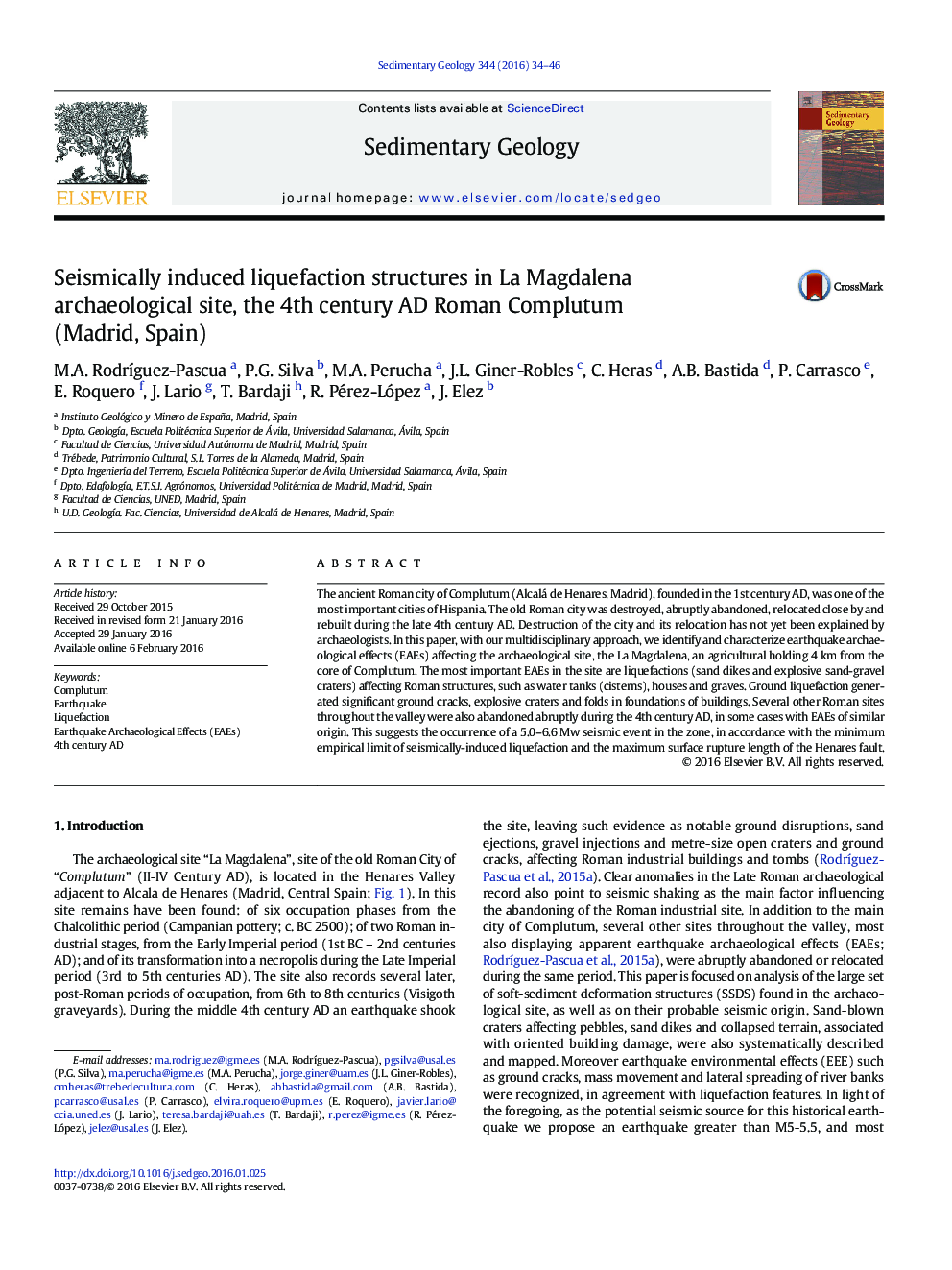| کد مقاله | کد نشریه | سال انتشار | مقاله انگلیسی | نسخه تمام متن |
|---|---|---|---|---|
| 4688947 | 1636019 | 2016 | 13 صفحه PDF | دانلود رایگان |
The ancient Roman city of Complutum (Alcalá de Henares, Madrid), founded in the 1st century AD, was one of the most important cities of Hispania. The old Roman city was destroyed, abruptly abandoned, relocated close by and rebuilt during the late 4th century AD. Destruction of the city and its relocation has not yet been explained by archaeologists. In this paper, with our multidisciplinary approach, we identify and characterize earthquake archaeological effects (EAEs) affecting the archaeological site, the La Magdalena, an agricultural holding 4 km from the core of Complutum. The most important EAEs in the site are liquefactions (sand dikes and explosive sand-gravel craters) affecting Roman structures, such as water tanks (cisterns), houses and graves. Ground liquefaction generated significant ground cracks, explosive craters and folds in foundations of buildings. Several other Roman sites throughout the valley were also abandoned abruptly during the 4th century AD, in some cases with EAEs of similar origin. This suggests the occurrence of a 5.0–6.6 Mw seismic event in the zone, in accordance with the minimum empirical limit of seismically-induced liquefaction and the maximum surface rupture length of the Henares fault.
Journal: Sedimentary Geology - Volume 344, October 2016, Pages 34–46
